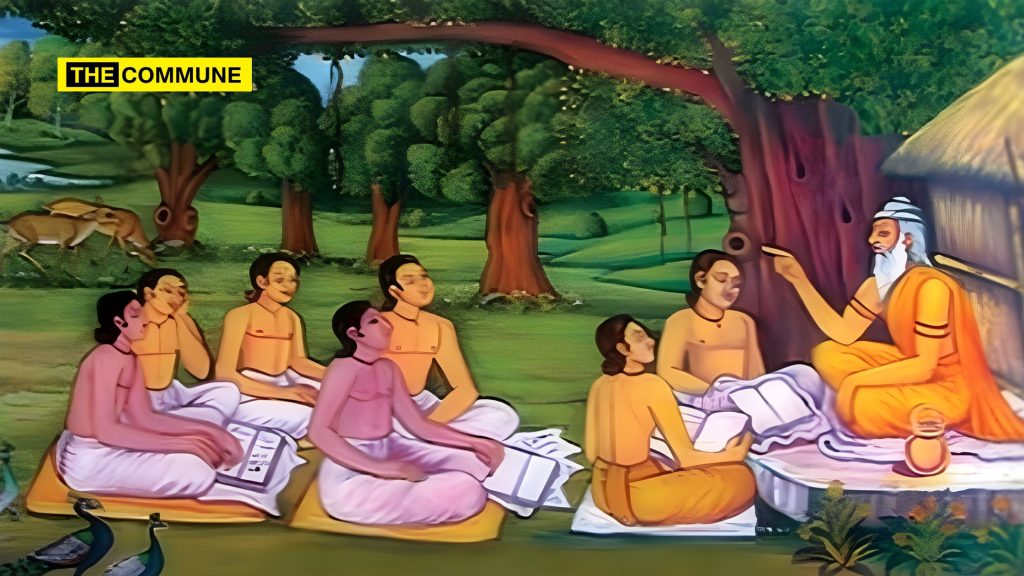A narrative that has been consistently promoted by leftist and Marxist historians in India is that only after the post-colonial era did education become accessible to all Indians, regardless of caste, and that prior to this, educational opportunities were nonexistent. However, the claim that lower castes were denied education for 5,000 years and that the British era marked the beginning of educational decline is misleading. Contrary to this narrative, extensive surveys conducted by the British in the 1820s and 1830s, as documented by historian Dharampal, present a different picture of indigenous education in India.
When the British arrived in India, thousands of schools called pathshalas existed across the country. William Adam, a missionary who surveyed Bengal and Bihar, reported that there were an estimated 100,000 schools spread across 150,748 villages. British official G.L. Prendergast observed, “There is hardly a village in which there is not at least one school.” These findings show that indigenous education was indeed widespread.
Structure Of Indigenous Schools
Education in pathshalas was typically organized into four stages:
- Learning the local language alphabet.
- Reading, writing, and basic arithmetic.
- Advanced arithmetic and problem-solving.
- Writing letters, petitions, and bookkeeping.
Although the system wasn’t standardized, it was practical and equipped students with essential skills for trade, administration, and daily life.
Who Were The Teachers?
While teachers in these schools often came from certain castes such as Brahmins, Kayasthas (scribes), and Aguris, there is evidence to suggest that teachers also belonged to other castes, including Dalits (previously considered “untouchables”). In areas like Tirhut, Bihar, there were a significant number of scholars from various castes. Scheduled Castes marked in red and OBC’s in yellow.
Who Were The Students?
The majority of students in these pathshalas came from lower castes. For example, in districts like Trichinopoly and Coimbatore, Shudras (the lower castes) comprised 76-78% of the students, indicating broad participation in education across caste lines. However, higher education institutions were more likely to be attended by upper-caste students due to their access to Sanskrit learning, which had limited relevance to the professions of lower castes.
Was Caste A Barrier For Education?
Rev. G.A. Robertson, a missionary, observed that in many schools, students were judged based on merit rather than caste. Brahmin and non-Brahmin students were treated equally, and upper-caste parents were not opposed to sending their children to Dalit or Muslim teachers. Interestingly, in Burdwan, Bengal, out of 674 Dalit scholars, 87% attended native schools, while only 13% were in missionary-run institutions.
Pre-colonial Multilingual Education
Pre-colonial schools were often multilingual, serving various linguistic communities. For instance, in Bellary (Karnataka), there were:
- 235 Kannada schools
- 226 Telugu schools
- 23 Marathi schools
- 21 Persian schools
- 4 Tamil schools
- 23 Sanskrit colleges
Higher Education And Vidyapeeths:
India had institutions of higher learning, known as vidyapeeths, which were akin to colleges today. These institutions offered education in fields like:
- Medicine
- Law
- Astronomy
- Mathematics
- Hindu philosophy (e.g., Vedanta, Mimamsa)
These higher education institutions were fewer in number compared to the more widespread elementary education, as most professions relied on on-the-job training rather than formal higher education. While elementary education was imparted in vernacular languages, Sanskrit was used for advanced studies.
Women’s Education
While formal education for women was limited, it was not completely restricted. Some girls, especially from artistic or dancing backgrounds, received training in arts and literature. Exclusive schools for girls were rare, but private tutoring was a common alternative. Though education for women wasn’t widely promoted at the time, there were exceptions, particularly among the elite and artistic communities.
Funding And Operation of Schools
Some schools charged fees, but many did not, and poorer students were exempt from fees if they couldn’t afford them. These schools were funded by:
- Local communities, with donations from all sections of society
- Local rulers and wealthy merchants
- Temples, which also provided classrooms
Teachers were often supported through land grants or produce, and many taught without any payment.
Impact Of British Policies On Indigenous Education
The British policies centralized revenue collection, disrupting the community-based funding system for schools. Over time, the traditional educational system declined, and British-style schools became more prevalent. As British administration took control over education, local schools suffered.
British Neglect Of Native Education
In the 1800s, education in India was available to the common people, unlike in England and the West, where it was largely reserved for the wealthy. However, as British policies took hold, the literacy rate declined, particularly among lower castes. Macaulay’s policies, which emphasized English education and discouraged local languages and Sanskrit, led to the gradual disappearance of grassroots education. By the late 1800s, village-level education in native languages was almost entirely gone.
Revival Of Indian Education By Swami Vivekananda
Swami Vivekananda played a crucial role in reversing the damage caused by British missionaries, especially in terms of integrating aspects of Hinduism and promoting an inclusive vision of education. He spoke fluent English and traveled worldwide to share the teachings of his guru, Ramakrishna, promoting a Universal Religion that transcended religious boundaries.
In conclusion, education in India prior to British colonization was diverse, widespread, and community driven. British policies and centralized control led to a significant decline in this indigenous education system.
This article is based on an X thread By Itiha
Subscribe to our channels on Telegram, WhatsApp, and Instagram and get the best stories of the day delivered to you personally.

